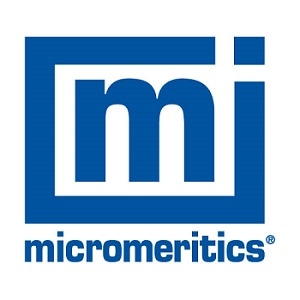Drug delivery as solid dosage forms is complex with a number of factors that can noticeably influence their therapeutic benefit. The drug must be stabilized in the tablet and at the same time be available for absorption in a short time after dosing1. The formulation and design of soluble oral tablets needs several factors to be considered:
- Time of release (rapid release or slow/timed release)
- Providing optimum bioavailability for actives
- The stability of the active compound (shelf-life and inside the patient)
Porosity is a key attribute of tablets that can strongly influence their performance. By measuring porosity, the manufacturer can design tablets to satisfy critical parameters including:
- Deformation properties during compression
- Pharmacokinetic behaviour
- Shelf life
- Moisture ingress during dissolution
- The bioavailability of the active component
- The dissolution rate of the tablet
Porosity is a good prediction of how liquids enter into the tablet matrix, and the expectations can be validated by experiment2. Dissolution rates do not exclusively depend upon porosity; other predictors are also valid include solubility, surface area, and particle size. In addition to carrying out dissolution testing, establishing porosity, surface area and other characteristics are key to establishing the optimal dissolution rate.
Rapid disintegration
Solid dosage forms used to deliver analgesics tend to focus on rapid-release, as the onset of action has to be almost immediate. 'Immediate' is actually defined as disintegration within a set period, normally 2.5 min but no longer than 10 min2,3. Immediate-release formulations incorporate hydrophilic and hygroscopic excipients to aid the access of fluids and swelling of the tablet and thus successful dissolution. Disintegrants and superdisintegrants (2-5% w/v) including: croscarmellose sodium (CCS), sodium starch glycolate, and crospovidone are commonly necessary to provide enhanced rapid release properties2.
The influence of porosity
Tablet porosity is not just a predictor of dissolution and solvent ingress. With the growing importance of Quality by Design (QbD) porosity is also an important Critical Quality Attribute (CQA) for both disintegration and bioavailability properties4. These parameters are vital to provide data to allow the prediction of API and excipients behaviour in formulations.
The physical properties of granules and their porosity are generally excellent influencers of compatibility that can be adjusted during the manufacturing process by modifying the formulation. Changes in porosity or compression shear strength are extremely significant in the compaction characteristics of granules5,6.
Case study
Using pore characteristics to predict tablet dissolution can have difficulties, a study published in 1998 by Riipi et al1 examined the dissolution rate and porosity of compressed erythromycin acistrate tablets. High-pressure mercury porosimetry was used to determine total porosity of the tablets, pore size distribution and porespecific surface area . The results indicated thateven with pore size distribution data and differences in pore structure, the dissolution behaviour of erythromycin acistrate tablets required other analytical techniques to provide a full explanation1,7.
A 2013 Bristol Myers Squibb study showed that pore size was one of the key factors influencing the release rate of the API. The mercury porosimetry based study also examined the role of water and recrystallization of the API on dissolution slowdown. Dissolution and recrystallization of the test API was shown to be due to achange of pore size distribution following moisture conditioning of the tablet
The drug release mechanism connected the spatial distribution of tablet porosity to the dissolution profile. This provedtheimpact of tablet porosity on the drug release mechanism8.
Autopore V from Micromeritics
Mercury porosimetry analysis is based on the ingress of mercury into poresunder strict pressure control. The technique offers speed, accuracy, and a wide measurement range . Benefits includethe calculation of numerous sample properties such as:
- Pore size distributions,
- Total pore volume,
- Total pore surface area,
- Median pore diameter,
- Sample densities for bulk and skeletal samples
- Resolution in the intrusion profile of 0.1 pL.
The AutoPore V Series mercury porosimeter isa safe and automated methodfor high precision intrusion studies on powdered and solid materials.
References and Further Reading
- Riippi M, Yliruusi J, Niskanen T, Kiesvaara J., Dependence between dissolution rate and porosity of compressed erythromycin acistrate tablets, Eur J Pharm Biopharm. 1998 Sep;46(2):169-75.
- Jonsson H., Frenning G et al., Investigations of single microcrystalline cellulose-based granules subjected to confined triaxial compression, Powder Technology, Volume 289, February 01, 2016.
- Cruaud O, Duchene D, Puisieux F, Carstensen JT., Correlation between porosity and dissolution rate constants for disintegrating tablets, J Pharm Sci. 1980 May;69(5):607- 8.
- Samy Yassin, Daniel J. Goodwin, J. Axel Zeitler et al., The Disintegration Process in Microcrystalline Cellulose Based Tablets, Part 1: Influence of Temperature, Porosity and Superdisintegrants, Journal of Pharmaceutical Sciences, Volume 104, Issue 10, 2015
- Gohel M, Jogani PD. 2005. A review of co-processed directly compressible excipients. J Pharm Pharm Sci 8(l):76-93.
- Bi YX, Sunada H, Yonezawa Y, Danjo K. 1999. Evaluation of rapidly disintegrating tablets prepared by a direct compression method. Drug Dev Ind Pharm 25(5):571-581.
- Strickland WA, Busse LW, Higuchi T. 1956. The physics of tablet compression XI. Determination of porosity of tablet granulations. J Am Pharm Assoc 45(7):482-486.
- S. Wolfe, S. Pafiakis, D. Tang, S. Jennings, A. Abebe, Z. Gao, S. Varia, A. Narang, Effect of Tablet Pore Size Distribution on Dissolution upon Accelerated Storage Conditions, Bristol-Myers Squibb Company, American Association of Pharmaceutical Scientists 2013, Poster

This information has been sourced, reviewed and adapted from materials provided by Micromeritics Instrument Corporation.
For more information on this source, please visit Micromeritics Instrument Corporation.